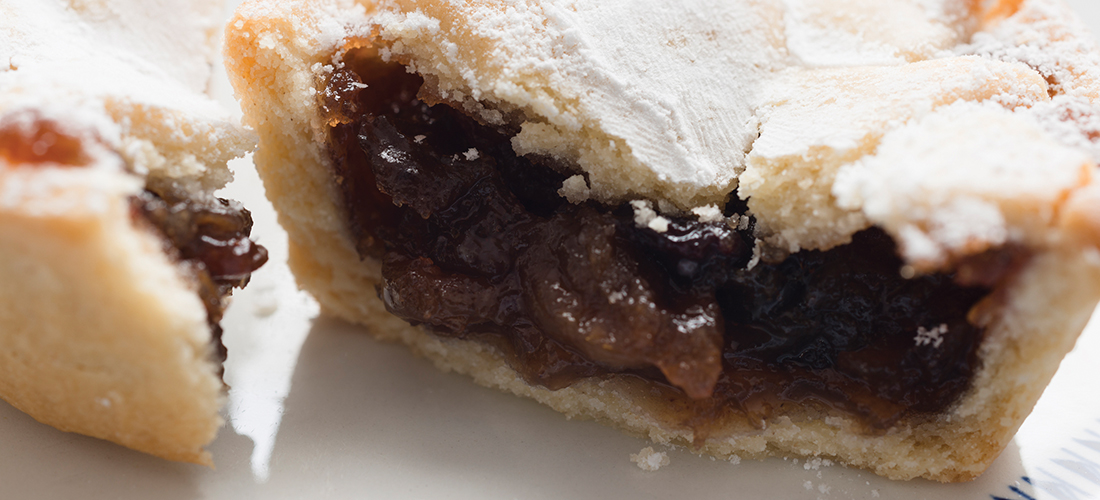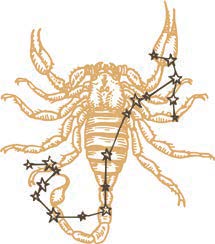
One cook’s recreation of mincemeat pie — without a runcible spoon
By Diane Compton
It wasn’t long after I married that my mother joyously gave up her job as executive producer of Thanksgiving. My husband promptly dismissed the old standbys: green bean casserole, sweet potato casserole, Jell-O salad, mashed potatoes and cranberry sauce “fresh” from the can. Having more faith in my culinary skills than actual evidence, he tagged and circled all sorts of derivative recipes from popular cooking magazines and I, eager to please, attempted them all. The family endured many years of this with great kindness and “compliments” such as, ”I’ve never tasted anything like this before!” But a generous pour of good wine and lively conversation overcame any mistakes and thus the day was declared a success.
The arrival of children and the gift of my grandmother’s cookbook, Pure Cook Book, published by the Women’s Progressive Farm Association of Missouri, heralded a return to the classics of the holiday. A virtual time machine, this worn, torn and faded tome took me into her Depression-era farm kitchen. Page stains and handwritten notes marked favorite recipes, among them mince pie. Why not start a new tradition connecting the generations and add this to the holiday table? My suggestion elicited all kinds of family reactions. From the daughters: “Ewww! Sounds gross!” From the husband: “Hmmmm, I ate it, once.” From my parents: “What’s wrong with pecan pie?”
Convinced that anything made from scratch would be far, far superior to packaged stuff, I began a search for the perfect mincemeat recipe. The family promised to try it with all the enthusiasm usually reserved for boiled cabbage.
Pies are the dessert of choice for the creative cook. Imagine, between two layers of pastry an infinite universe of fillings with few rules and, given enough sugar and butter, almost always delicious. Grandmother’s cookbook featured eleven recipes for mincemeat. Where to start? Traditional mincemeat really does contain meat. The first recorded recipes go back to the eleventh century where meat and dried fruits were combined with newly available spices — cloves, nutmeg and cinnamon — then soused with lots of brandy. Over the years mincemeat became sweeter as fruit became the predominate ingredient. All the recipes in grandmother’s cookbook still included meat but not a drop of brandy. Oh, yeah, 1930, the Prohibition era. Today, commercially available mincemeat is heavy on fruit, sugar and spice with nary a whisper of meat or brandy. No wonder this wimpy stuff has been relegated to the bottom shelf of the baking aisle. My challenge: to make authentic mincemeat appealing to modern tastes.
This recipe restores both brandy and meat; specifically beef suet to the ingredient list. Suet is a specialty fat found near the kidneys. With a higher melting point than butter, suet adds deeper and more nuanced flavor to mincemeat, maintaining the connection to its carnivorous history.
Another reason to try mincemeat pie? The filling can be made in advance and so can the crust. If you make your own pastry, line the pie dish with rolled dough, wrap and freeze the dish, and it’s ready to go at a moment’s notice. Mincemeat pie needs a top crust. Roll the dough into a circle on plastic wrap, cover with another layer of plastic and roll the circle into a tube before freezing.
Making the mincemeat filling is a great family activity, with lots of chopping and kid-friendly
ingredients. Also, unlike the sugar bomb known as pecan pie, mincemeat is not cloyingly sweet. Start with a 4- or 5-quart heavy saucepan or Dutch oven on the stove and add the following:
3 pounds of apples, peeled, cored and diced. Use a variety of Golden Delicious, Granny Smith, Jonagold or McIntosh.
2 1/2 cups of dried fruit. Try a combination of raisins, golden raisins, currants and maybe some diced dried cherries for fun.
1/4 cup of chopped candied peel (orange or citron)
2 tablespoons minced crystallized ginger (optional, but lovely)
1/4 pound minced suet. Can’t find suet? Beefaphobic? Substitute butter and you’ve made what Grandmother called “mock mince.”
2/3 cup packed brown sugar
1/4 cup molasses
Zest and juice from an orange and a lemon
Pinch of salt
2 cups apple cider
And now, the spices. Mincemeat uses a small amount of several expensive spices, many that you bought before your first iPhone. Don’t do it! Just 2 to 3 teaspoons of fresh pumpkin pie spice is an economical alternative to separate jars of cinnamon, nutmeg, allspice, mace and cloves.
Remember we’re making pies here so don’t get too caught up in the exact ingredients, add more or less of things as you like. Grandmother used what was available. Got a bit of ground venison in the freezer? Be truly authentic and add some to the pot! Don’t tell the kids.
Bring everything to a boil, reduce heat and simmer on low for 2 hours, stirring occasionally. When the mixture begins to thicken, stir more frequently. Add 1/4 cup of brandy and stir often for 15 minutes until thick and jammy. Cool and refrigerate. Filling can be prepared a week in advance.
On pie day, add the filling to your prepared pie dish. Unroll the top crust and place over the filling. Decoratively flute the edges and don’t forget to cut a few vent holes in the top. For a glossy golden crust, brush the dough with a little beaten egg and sprinkle some coarse sugar on top. Bake in a preheated 400°oven for 20 minutes then reduce oven temperature to 325° for another 30 to 40 minutes. Cool completely. Can be made a day ahead.
Mincemeat filling also makes a great cookie that can be baked ahead of the holiday and frozen till needed. Spread a little caramel frosting on top and make it special.
That first year I took great pains to make the pie’s edges and top beautifully decorative because its true, we “eat with the eye” first. Everyone bravely tried a slice because after all, it was pie! My daughter confirmed, “This is lovely, it just needs a better name.” Forget it, Darling. This traditional holiday pie is a living link to generations of family celebrations.
I treasure my Grandmother’s cookbook and touch the handwritten notes, imagining her as a new bride learning to cook and care for her own family. It was both cookbook and household guide, full of practical medical advice and handy hints, some guaranteed to horrify (remedies made of kerosene, turpentine and gasoline figure prominently). Unfortunately the back cover along with the last chapter “How to Cook Husbands” is missing. I wonder: Did my grandfather have a hand in that? PS
Diane Compton is tech class instructor and in-home specialist for Williams-Sonoma at Friendly Center.





